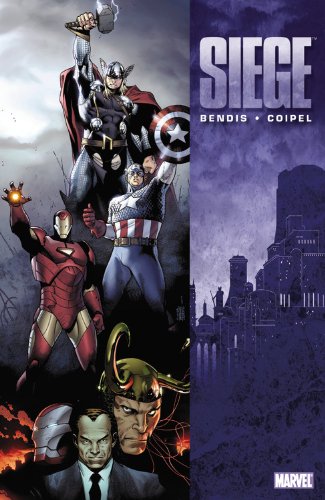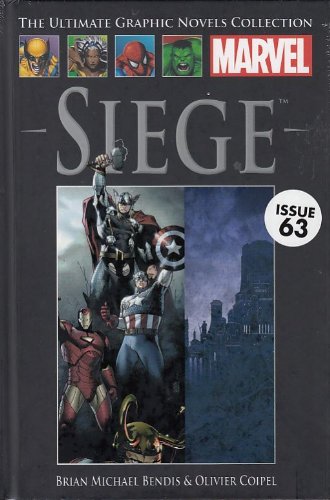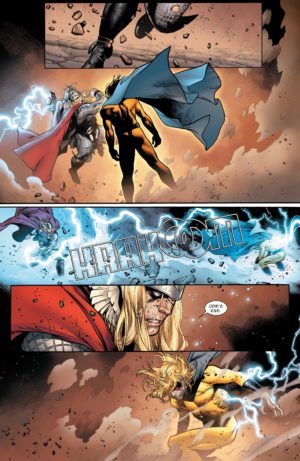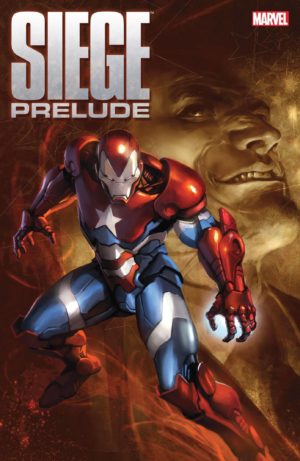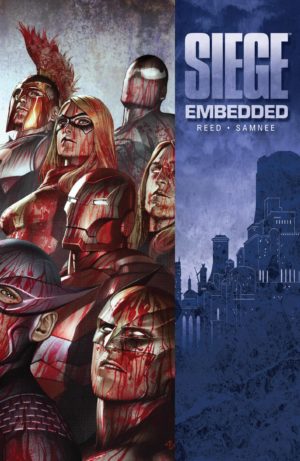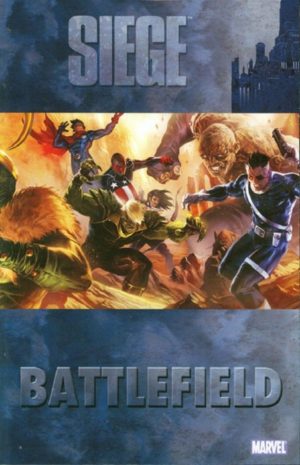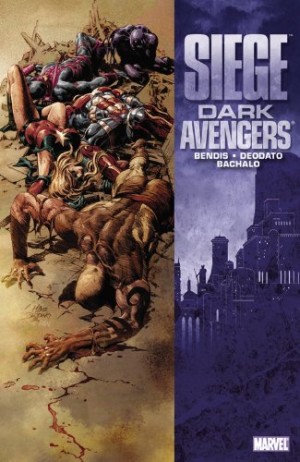Review by Karl Verhoven
At the end of Secret Invasion a heroic act on the part of Norman Osborn wiped away years of mistrust and he was placed in charge of the US security services, then considered to have failed under Tony Stark. Effective public relations wiped over his Green Goblin career, and the lunatic had truly taken over the asylum. During this period Asgard, home of the Norse Gods, was hovering over the town of Broxton in Oklahoma, and not everyone was happy about this. Besides, one of Osborn’s allies Loki had long attempted to rule Asgard, so maybe they could engineer something.
A clever opening page by Brian Michael Bendis and Michael Lark shows Osborn still beset by demons, his inner voice challenging him to rid Earth of Asgard. “You pull this off… you’re bulletproof. Untouchable.”, Osborn hears, “it will take the leaders of the free world decades to come to grips with what you’ve accomplished”. That’s not how it plays out, and it’s cleverly reworked in Siege: Battlefield.
Motivated by his ego, Osborn has his criminals masquerading as Avengers invade Asgard, home of the Norse gods. What follows isn’t greatly different from any other bombastic Marvel summer crossover event. It spills over into several other graphic novels (see recommendations) and into regular series, but there is an editorial consideration enabling this to be read as a standalone graphic novel with a complete story and almost all questions answered. Bendis’ novelty is to let some of what takes place be streamed live via a TV crew, which gives a human perspective on a monumental event, much like Marvels.
An unwritten rule of superhero events is that there can be no drama without death, a flawed concept here executed in a gruesomely unrestrained spread by Olivier Coipel. He draws the primary events, for the most part spectacularly well, although as the story continues there are an increasing number of what are in effect pin-up pages, grouped heroes or villains grimacing. Coipel’s illustrations also accompany four page transcript sections following each chapter. These are Bendis throwing more light on pivotal scenes, but becoming too enamoured with the dialogue patterns. However, his basic plot is solid, not conforming to what’s expected by starting as a story about one threat while constantly escalating a second threat into something even more terrifying.
Bendis and Jim Cheung’s follow-up piece only vaguely ties into the Siege storyline by virtue of involving many of the same superheroes, although it definitively shows what one of them is capable of, which does have a relevance. The threat is immense, and it’s effectively locked down.
Perhaps the violence is too overstated, but Siege reads well as a testament to hubris motivated by madness. Afterwards the scales fell from the eyes of public officials, Captain America was placed in charge of America’s security and for better or worse most Marvel series were rebooted.
